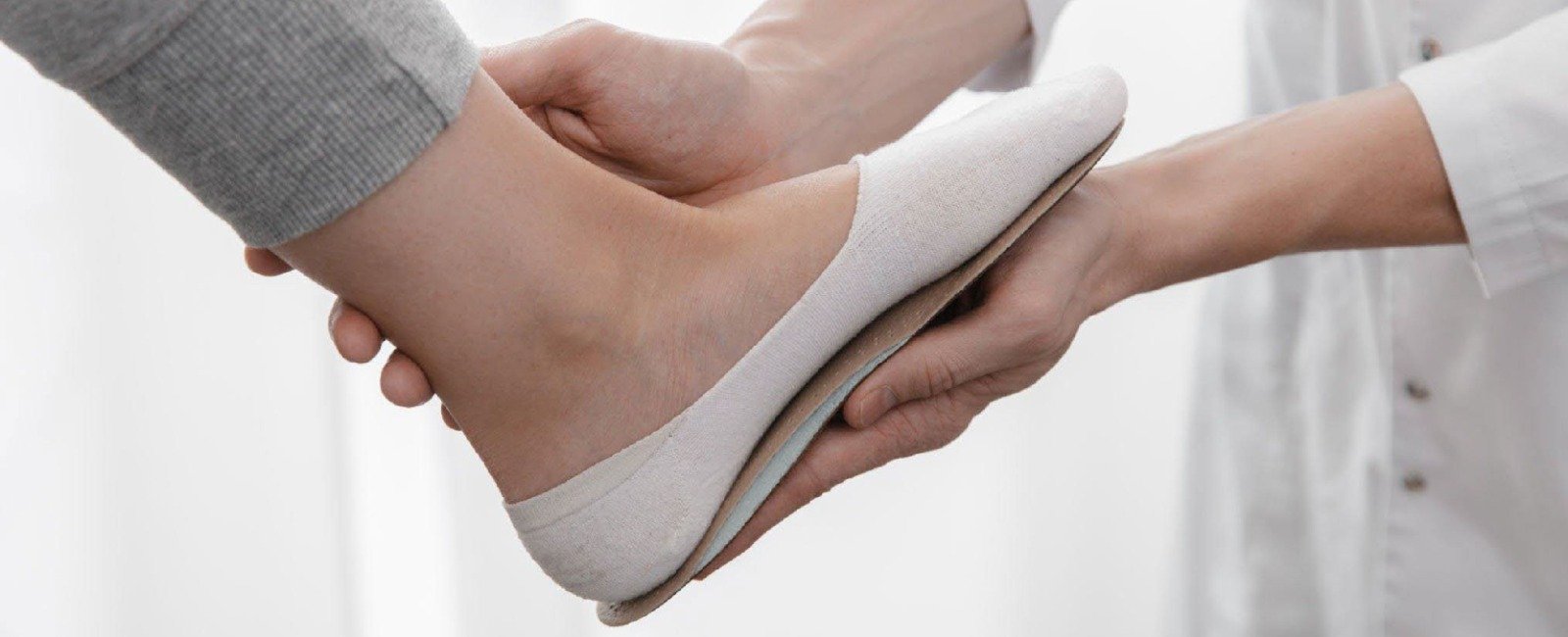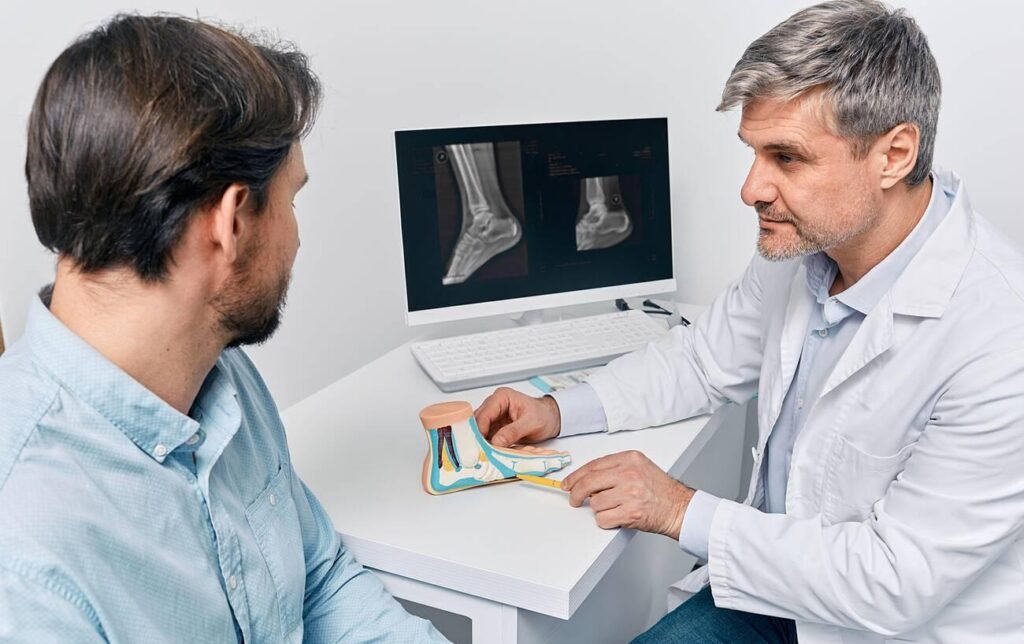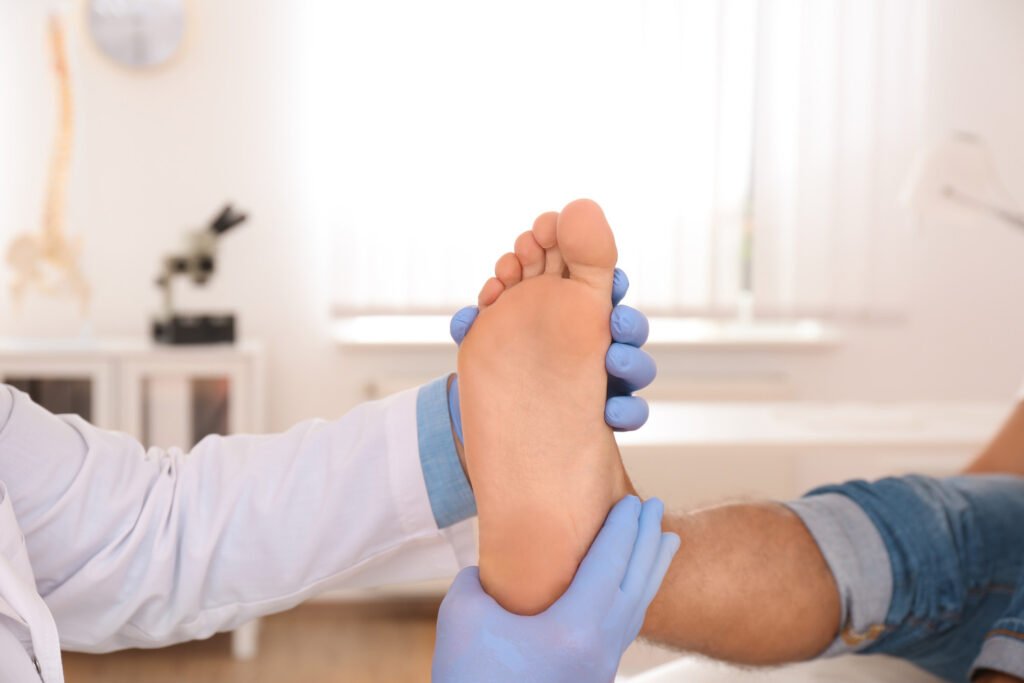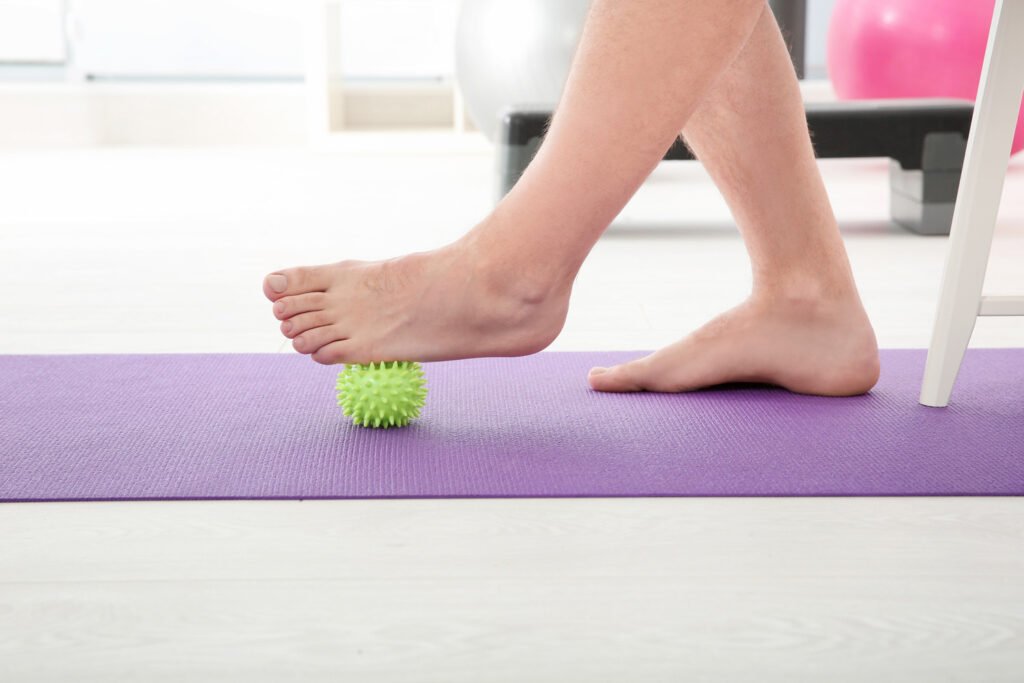FLAT FEET

Discover Stability and Comfort
through Flat Feet Solutions
Discover Stability and Comfort through Flat Feet Solutions
FLAT FEET Q&A

WHAT ARE FLAT FEET?
Flat feet, also known as fallen arches, is a condition in which the arch of the foot is flattened. This can cause the entire sole of the foot to touch the ground. Flat feet can occur in one or both feet and can be present from birth or develop later in life. In a normal foot, there is a visible upward curve in the middle, known as the arch but in individuals with flat feet, this arch is either very low or nonexistent.
Flat feet have two main types: flexible and rigid.
- Flexible Flat Feet: This is the more common type and is often seen in children. The arch is present when the individual is sitting or on their tiptoes but disappears when they stand.
- Rigid Flat Feet: In rigid flat feet, the arch is not present whether the person is sitting, standing, or on their tiptoes. It may be the result of an underlying condition such as arthritis or a problem with the bones or tendons in the foot.
WHAT ARE THE SYMPTOMS OF FLAT FEET?
The symptoms of flat feet can vary from person to person.
Here are common symptoms associated with flat feet:
- Pain or Discomfort: Pain or discomfort is the most common symptom along the inner side of the foot, especially in the arch or heel. This discomfort may be more pronounced after standing or walking for long periods.
- Swelling: Some individuals may experience swelling along the inside of the ankle. This can be a result of the strain on the muscles and ligaments supporting the foot's arch.
- Tired or Achy Feet: People who have flat feet may feel that their feet tire easily and may feel frequently tired or achy, especially after engaging in activities that require them to stand or walk for extended periods of time.
- Difficulty Atanding on Tiptoes: It may be difficult for people with flat feet to stand on their toes or carry out tasks requiring a lot of arch support.
- Foot Alignment Issues: Flat feet can contribute to misalignment of the feet, ankles, and even the lower legs. This misalignment can result in issues such as overpronation, where the foot rolls excessively inward during walking or running.
- Uneven Shoe Wear: Flat feet can cause uneven wear on the soles of shoes. If you notice that your shoes wear down more on one side than the other, it could be a sign of flat feet.
- Lower Leg and Back Pain: The effects can extend beyond the feet themselves. Misalignment can contribute to pain in the lower legs, knees and even the lower back.
- Stiffness in the Foot: Some people may experience stiffness in the foot, making it difficult to move the foot or toes comfortably.
In some cases, flat feet can also lead to hammertoes or bunions. It is important to note that not every individual will experience symptoms. Some people may have it but will not experience any flat feet pain or discomfort at all. However, if you are experiencing continuous flat feet pain or discomfort, it's advisable to consult with a foot and ankle specialist for a complete evaluation and appropriate flat foot treatment.


WHAT ARE THE RISK FACTORS FOR FLAT FEET?
Several risk factors may increase the likelihood of experiencing this condition.
Here are some key risk factors associated with flat feet:
- Genetics: A family history is a significant risk factor for developing the condition. The likelihood of an offspring inheriting the same biological characteristics in their feet is higher if one or both parents have flat feet.
- Obesity: Excess weight puts additional strain on the arches of the feet, causing them to overpronate and potentially collapse. Carrying extra weight increases the mechanical stress on the foot's ligaments and tendons, leading to a flattening of the arch.
- Injury: Injuries to the feet or ankles, such as fractures, sprains, or ligament tears, can damage the supportive structures of the arch, increasing the chances of flat feet developing. These injuries can disrupt the alignment and stability of the foot, leading to a loss of arch height.
- Aging: The natural aging process can lead to a weakening of the tendons and ligaments in the feet, making them less effective in supporting the arch. As we age, the connective tissues in our bodies lose their elasticity and strength, increasing the risk of flat feet developing.
- Footwear: Wearing shoes with inadequate arch support or excessive heel height can contribute to the development of it. High heels can shift the body's weight forward, putting more pressure on the front of the foot and increasing the likelihood of arch collapse.
- Occupational factors: Certain occupations that demand prolonged standing or walking on hard surfaces can increase the risk of it due to the constant strain on the arches of the feet. Activities like running or jumping can also contribute to arch fatigue and potential collapse.
- Pregnancy: During pregnancy, weight gain and hormonal changes can increase the risk of it. The extra weight puts additional stress on the arches, and hormonal changes can affect the elasticity of the ligaments and tendons.
- Diabetes: Diabetes can damage the nerves and blood vessels in the feet, leading to neuropathy and reduced sensation. This can impair the foot's ability to sense and respond to changes in balance and pressure, increasing the risk of arch collapse.
It's crucial to remember that while having these characteristics may raise your chance of developing flat feet, not everyone who has them will end up with the condition. Furthermore, some individuals might not have any related symptoms. If you have concerns or questions about your feet or are experiencing flat feet pain, it's advisable to consult with a foot and ankle specialist for a thorough evaluation and guidance.
HOW DOES MY PODIATRIST DIAGNOSE FLAT FEET?
When you visit a podiatrist to discuss concerns about flat feet, they will conduct a thorough evaluation to diagnose the condition and determine its underlying causes.
Here's an overview of how a podiatrist typically diagnoses flat feet:
- Medical History: Your podiatrist will ask about your medical history, including any family history of flat feet, any previous injuries to your feet or ankles, and any current symptoms you are experiencing.
- Physical Examination: Your podiatrist will examine your feet while you are sitting, standing, and walking. They will look for signs such as an excessive inward rolling of the ankles or a complete flattening of the arches when you are standing.
- Wet Footprint Test: This test involves wetting your feet and standing on a piece of paper or a special ink mat. The podiatrist will then examine the print of your feet. A thicker print between the heel and the ball of the foot indicates a flatter arch.
- Shoe Inspection: Your podiatrist will also inspect your shoes for signs of excessive wear on the inside of the soles or heels.
- Imaging Tests: In some cases, your podiatrist may order imaging tests, such as X-rays or MRI scans, to get a more detailed look at the bones and muscles in your feet. These tests can help to rule out other causes of your symptoms, such as arthritis or a fracture.
- Functional Tests: Your podiatrist may ask you to perform certain exercises to evaluate the strength and flexibility of the muscles and ligaments in your feet. These tests can help assess how well your feet are functioning.


HOW ARE FLAT FEET TREATED? OR WHAT ARE THE TREATMENT OPTIONS FOR FLAT FEET?
The treatment for flat feet depends on the severity of symptoms and the underlying causes.
Here are some common treatment options for you:
- Orthotics: Orthotics are inserts that are placed in shoes to support the arch of the foot and reduce flat feet pain. They can be made of a variety of materials, such as plastic, leather, or cork. Orthotics are custom- made according to the individual's feet and can be adjusted as needed.
- Physical Therapy: Physical therapy exercises can help to strengthen the muscles and tendons that support the arch of the foot. These exercises can also help to improve flexibility and reduce flat feet pain.
- Weight Management: If the individual is overweight, losing weight can help to reduce the stress on your arches. This can lead to a decrease in flat feet pain and may help to prevent the condition from worsening.
- Footwear: Choosing shoes with good arch support and avoiding shoes that are too high-heeled or too flexible can help to prevent it from getting worse. Look for shoes that have a deep heel cup and a flexible sole.
- Activity Modification: The discomfort associated can be managed by modifying activities that increase symptoms, such as avoiding high-impact activities or extended periods of standing.
- Surgical Intervention: In severe cases or when conservative measures fail to provide relief, surgical intervention may be considered. Flat foot correction surgery aims to reconstruct or repair the affected tendons and ligaments, restore proper foot alignment, or correct deformities.
If you are concerned about your risk of developing flat feet, it is important to see a foot and ankle specialist to get a diagnosis and discuss treatment options.
FlaT Feet






